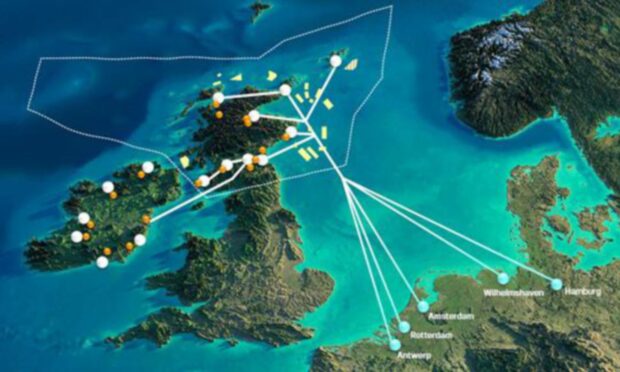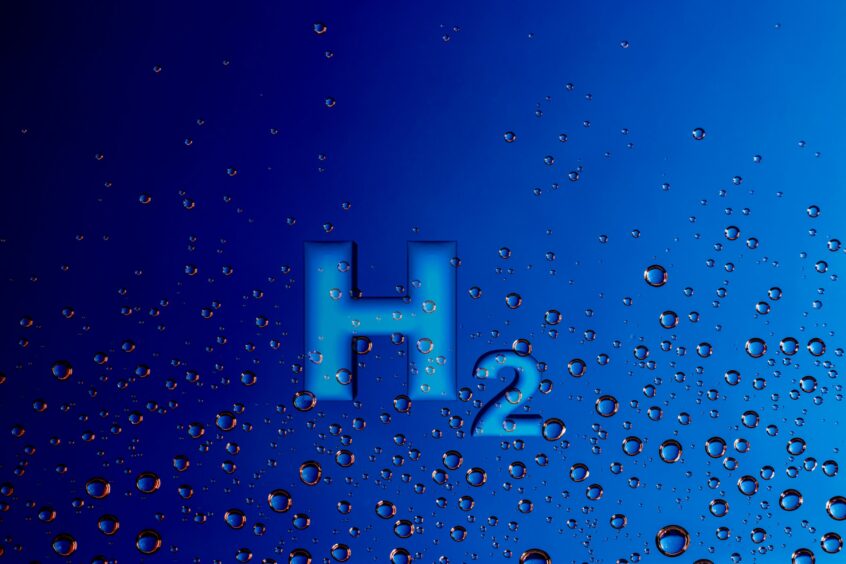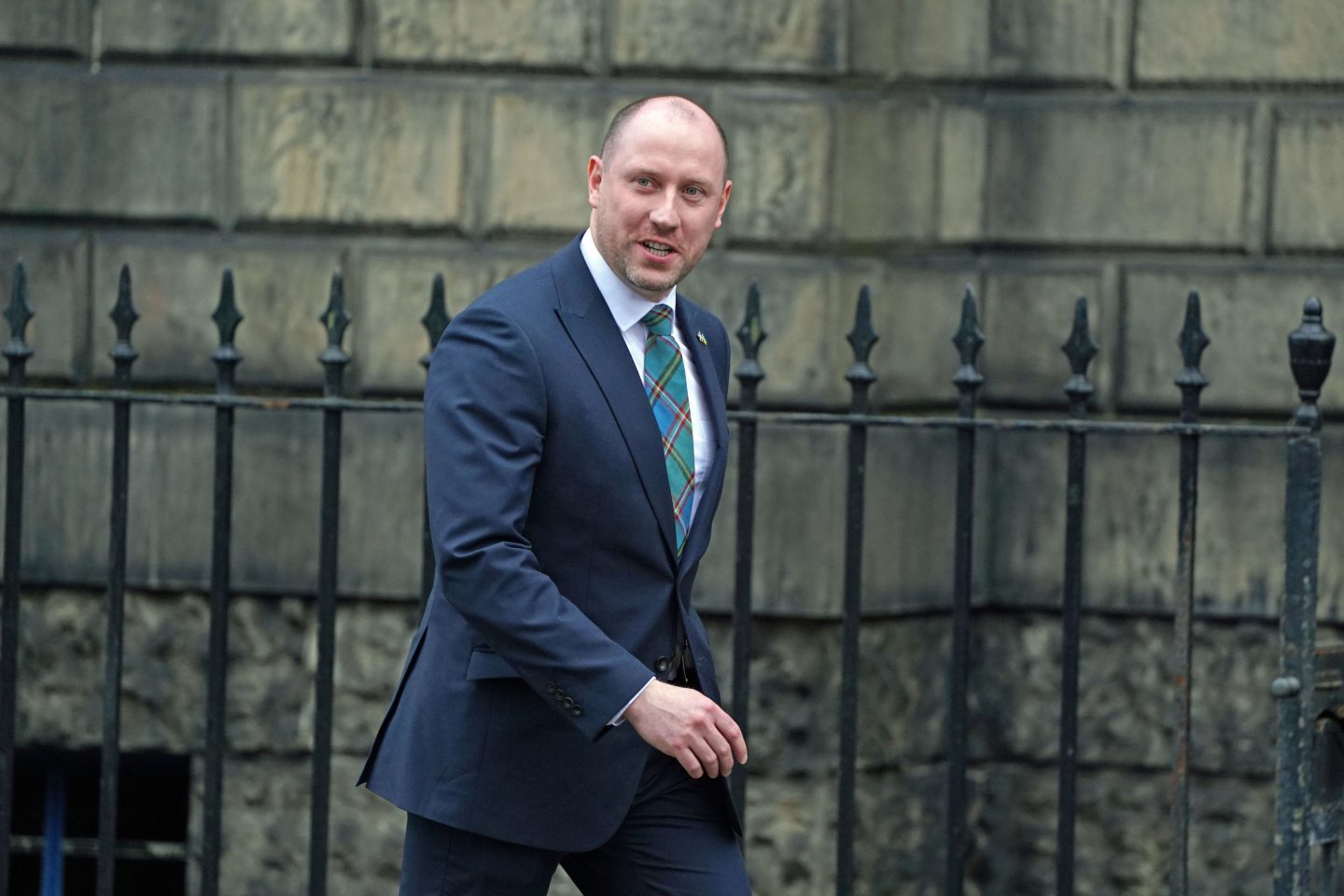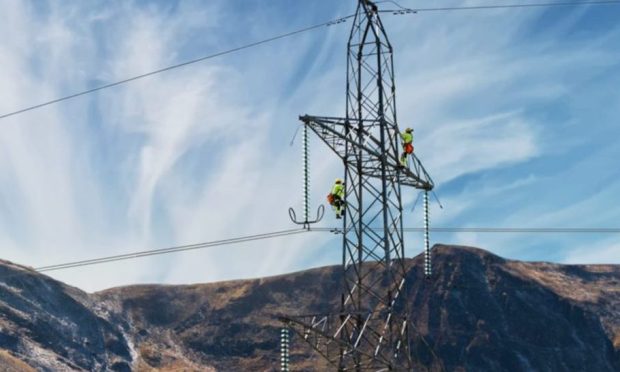A £2.7 billion pipeline network connecting Scottish hydrogen hubs to other parts of Europe could create hundreds of jobs and see the country become a major exporter to the EU, it is claimed.
The Aberdeen-based Net Zero Technmology Centre (NZTC) says around 700 jobs may be created.
A “best option”, according to an NZTC report out today, would deliver a new ‘backbone’ pipeline linking Flotta oil terminal in Orkney to the city of Emden in Germany.
There would also be “spurs” linking hydrogen production hubs at Sullom Voe in Shetland, the Cromarty Firth and St Fergus gas terminal, near Peterhead, to the main pipeline.
Holyrood’s hydrogen hopes
The Hydrogen Backbone Link (HBL) project is funded by the Scottish Government and industry. It is not clear how the network itself will be funded, but a public-private partnership is likely if the government seeks to take a stake.
Holyrood has an ambition for Scotand to become a major exporter of green hydrogen, obtained by the electrolysis of water.
Ministers claim Scotland could supply up to 10% of Europe’s projected hydrogen import demand by the mid-2030s. The 700 jobs envisaged through the HBL project would be on top of 300,000 forecast to be created in this country’s fast-growing green economy.
NZTC’s report makes a series of recommendations for “rapid acceleration of investment” to deliver the project by the mid-2030s, including development of a “national energy storage strategy” for 2030 and beyond.
It also recommends a cross-border policy alignment and finsncial support for technology and infrastructure.
Hydrogen high on EU’s energy agenda
The EU has put hydrogen at the heart of its energy strategy, amid concerns about security of supply, following Russia’s invasion of Ukraine,
EU demand is expected to be around 20 million tons by 2030, half of which will have to be imported. Estimates to 2050 increase that figure for overall demand to 60m tons, 50% of which would come from imports.
According to NZTC, the £2.7bn cost of the HBL over 30 years is “significantly cheaper than all other transport options”, like ships.
We want to work collaboratively with partners across Europe to advance infrastructure which ensures security of supply in Europe and positions the North Sea as a centre for low-cost hydrogen production.”
Neil Gray, energy secretary
NZTC HBL project manager Callum Milne said: “Scotland is poised to utilise its abundant natural resources, skilled workforce and proximity to an energy hungry market in north-west Europe.
“But to maximise this will take accelerated and increased government and industry investment, rapid development of infrastructure and cross-border collaboration over the next decade.
“The Hydrogen Backbone Link project is a key early enabler for this, providing cost-effective transportation to market for Scottish hydrogen producers and supporting the transition to a low-carbon energy system.”
Scotland’s hydrogen assessment report, launched by the Scottish Government in 2020, aims for the country to eventually become a net exporter of green hydrogen.
The HBL project is supported by Shetland Islands Council, EnQuest, Kellas Midstream, Crown Estate Scotland and Shell, as well as a number of “contributing members”.
Energy Secretary Neil Gray said: “The Scottish Government recognises the importance of developing hydrogen pipelines to unlock Scotland’s export potential. We want to work collaboratively with partners across Europe to advance infrastructure which ensures security of supply in Europe and positions the North Sea as a centre for low-cost hydrogen production.
“The Scottish Government supports the Hydrogen Backbone Link project because it gives valuable insight into the viability of repurposing or developing new pipelines. This can help us understand any barriers where government support is required to unlock investment and realise Scotland’s export potential.”













Conversation